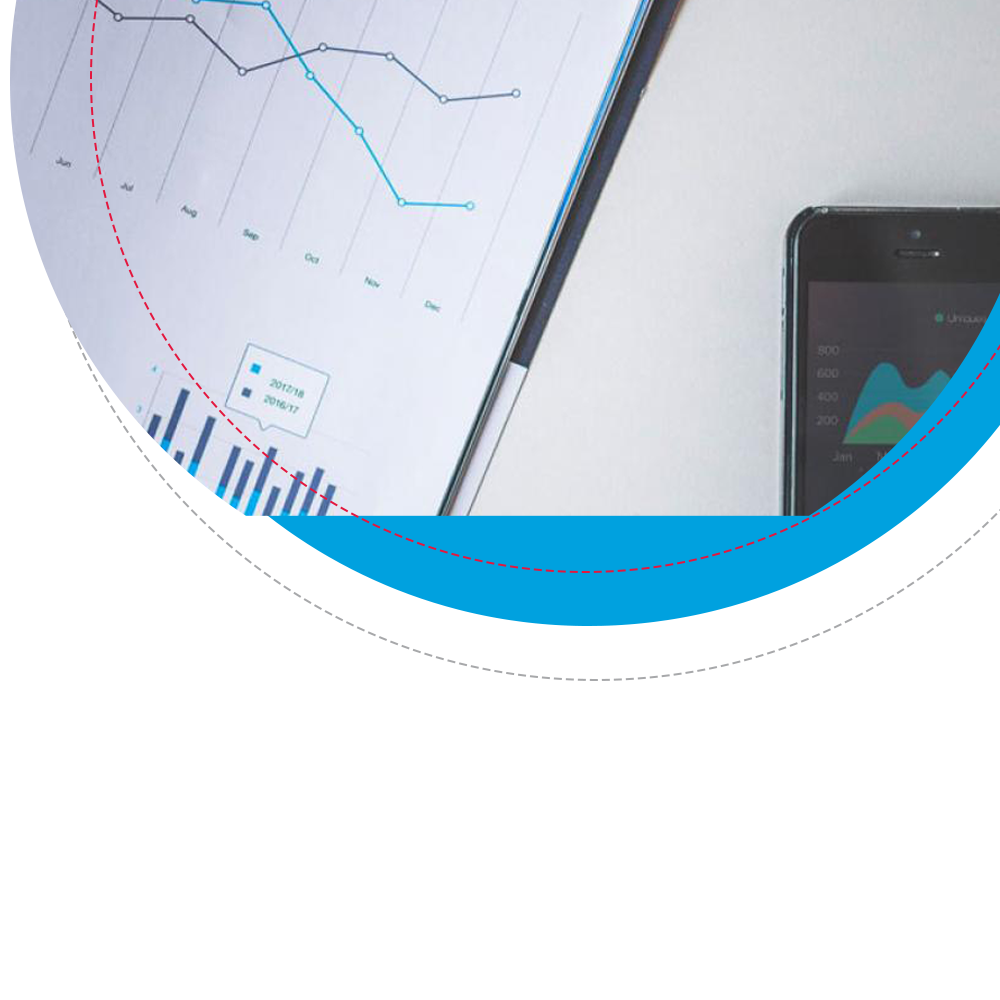
The power of data is undeniable, it enables companies to identify opportunities and optimize their marketing efforts. Therefore, it is not surprising that companies are amassing more data than ever before.
However, just collecting data is not enough, it must be analyzed, interpreted and transformed into actionable insights to drive better decisions. Unfortunately, it is not always easy to separate the useful information from the noise, and many companies fail to extract the insights that can help them improve their marketing performance.
If you can’t separate signal from noise – and extract the insights that help you boost marketing performance – then your data collection is a story of lost opportunity.
In Build Our Audience Inc., we specialize in helping businesses make sense of their data by providing context and bringing together data experts with cross-disciplinary teams of marketers to make better strategic decisions. We help companies turn data into actionable insights that drive marketing success.

Region-by-region reporting and agile planning helped Service King put a dent in spare capacity
Data analytics requires technical skill and expertise, but it’s not all number-crunching. By considering the factors below, you can ensure that you choose a data analytics and BI partner that is well-suited to your organization's needs and can help you make data-driven decisions that drive business success.
Expertise. Look for a partner that has a proven track record of delivering data analytics and BI solutions in your industry. They should have the expertise and experience to understand your unique business needs and provide tailored solutions.
Technology. Make sure the partner you choose has the right technology and tools to meet your specific needs. They should be able to integrate with your existing systems and provide real-time access to data.
Scalability. Choose a partner that can scale their services as your business grows. They should be able to handle increasing amounts of data and support your organization as it evolves.
Support. Look for a partner that provides ongoing support and maintenance. They should be responsive to your needs and provide timely assistance when required.
Communication. Partner with an organization that is easy to communicate and work with. They should be able to clearly explain their approach and provide regular updates on progress.
Cost-effective. Look for a partner that offers cost-effective solutions, while providing high-quality service.
Explore our catalogue of results achieved, challenges solved, and clients satisfied.

Data is a vital component of successful marketing, as it provides the means to measure performance and guide strategy. At BOA, we recognize the importance of data and place a strong emphasis on the collection, analysis, and reporting of data in all of our marketing engagements.

Clearly define the business problem or question that needs to be addressed. This will guide the data collection and analysis process.
Defining the problem or question that needs to be addressed is the first and most important step in the data analytics and business intelligence (BI) process.
It is crucial to have a clear understanding of what the business wants to achieve or what questions need to be answered in order to guide the data collection and analysis process. Without a clearly defined problem, it can be difficult to determine what data to collect, which analysis techniques to use, and how to interpret the results.
Build Our Audience Inc. helps you define the problem or question upfront. We make the data collection and analysis process tailored to your business's specific needs and ensure that the insights generated are relevant and actionable. We guide you to ensure that the right data is collected, and the right analysis techniques are used, which can help to save time and resources in the long run.

Collect the necessary data from internal and external sources. Prepare the data for analysis by cleaning, transforming, and integrating it as necessary.
The second step in the data analytics process is collecting and preparing the data. This step involves gathering the necessary data from both internal and external sources.
This can include data from customer databases, website analytics, social media, and third-party sources. Once the data is collected, it must be prepared for analysis. This typically involves cleaning the data, which can include removing outliers, filling in missing values, and ensuring that the data is in a consistent format.
The next step is to transform the data, this can include normalizing, aggregating or pivoting the data.
The final step is to integrate the data from different sources, if necessary, to ensure that it is all in one place and can be easily analyzed.
This step is critical to the data analytics process because it ensures that the data is accurate, consistent and ready for analysis. This step also plays an important role in Data Governance, Data Quality, and Data Integration.

Use statistical, machine learning, or other techniques to extract insights from the data. Identify patterns, trends, and relationships that can help answer the business question.
The third step in the data analytics process is to analyze the data. This step involves using a variety of techniques such as statistical, machine learning, and other data analytics methodologies to extract insights from the data.
The goal of this step is to identify patterns, trends, and relationships that can help answer the business question or problem that was defined in the first step. This step is critical to the data analytics process because it is where the insights are generated that will inform business decisions.
The specific techniques used will depend on the nature of the problem, the type of data available, and the goals of the analysis. Some examples of techniques that can be used include descriptive statistics, inferential statistics, data mining, predictive modeling, and natural language processing (NLP).
Build Our Audience Inc. data analytics + BI experts do a deep dive on data exploration and discovery, which helps us to identify any outliers, anomalies or unexpected patterns that might be useful to the business. The insights we generate from this step can be used to help you make inform business decisions and improve performance.
It's worth noting that BOA only deploys experts that have a high level of expertise and knowledge in data analytics as well as a deep understanding of the business and the problem at hand. We put experts who can do a thorough analysis, and generate more accurate and reliable insights to help drive better decision-making.

Use data visualization techniques to present the insights in an easy-to-understand format. This can help identify outliers, patterns and anomalies.
The fourth step in the data analytics process is to visualize the data. This step involves using data visualization techniques to present the insights that were generated in the previous step in an easy-to-understand format. Data visualization is an essential step in the data analytics process because it allows decision-makers to quickly grasp the insights and understand the story behind the data. It also helps to communicate the insights to a broader audience, making it more accessible and actionable.
There are various data visualization techniques that can be used, such as charts, graphs, maps, and dashboards. The specific technique used will depend on the type of data and the insights that need to be presented. Build Our Audience Inc. data analysts use the right visualization technique that makes the insights clear and easy for most business decision-makers to understand.
Our data analysts at BOA put emphasis on data visualization in identifying outliers, patterns, and anomalies that may not have been immediately obvious from the raw data. It allows us to identify trends, patterns and correlations that can help to identify opportunities, risks, or areas for improvement. By visualizing the data in a clear and easy-to-understand format, the insights can be more easily communicated and acted upon, leading to better decision-making and improved performance.

Communicate the findings to the appropriate stakeholders. This can include creating reports, dashboards, or other forms of visualizations that make the insights accessible to the business decision-makers.
The fifth step in the data analytics and business intelligence (BI) process is to communicate the insights. This step involves effectively communicating the findings to the appropriate stakeholders in a way that makes the insights accessible and actionable. The goal is to present the insights in a clear, concise, and easily understandable format that can inform business decisions.
One way to communicate the insights is by creating reports, dashboards, or other forms of visualizations. These can be used to present the insights in an easy-to-understand format, making it more accessible for business decision-makers. Reports and dashboards can be created using various data visualization techniques such as charts, graphs, maps, and tables. These techniques allow to present the insights in a clear, concise and easy-to-understand format.
Another way to communicate the insights is by using natural language generation (NLG) techniques, which can automatically generate written narratives from data. This can help to explain the insights and their significance in a more natural way, making it more accessible for non-technical stakeholders.
Data Governance and Data Quality are key elements that need to be considered when communicating the insights. It's important to ensure that the insights are accurate, reliable and that the data used is trustworthy. Data Governance and Data Quality are also important in ensuring that the insights are used properly and that the right people are aware of them.
By communicating the insights in an effective way, the insights generated can be more easily understood and acted upon, leading to better decision-making and improved performance.

Use the insights to inform business decisions and take action. This can include developing new strategies, adjusting existing plans, or identifying new opportunities.
The sixth step in the data analytics and business intelligence (BI) process is to take action. This step involves using the insights generated to inform business decisions and take action to improve performance. The goal is to use the insights to drive change, whether it is to develop new strategies, adjust existing plans, or identify new opportunities.
One way to take action is by developing new strategies based on the insights generated. This can include creating new product or service offerings, entering new markets, or developing new marketing campaigns. By using the insights to inform strategy, organizations can make better decisions that drive growth and success.
Another way to take action is by adjusting existing plans. This can include identifying areas for improvement and making changes to existing products, services, or processes. By using the insights to inform changes, organizations can improve performance and achieve better outcomes.
Finally, the insights can be used to identify new opportunities. This can include identifying new markets, customers, or revenue streams. By using the insights to identify new opportunities, organizations can drive growth and success in new areas.
Data Governance and Data Quality are key elements that need to be considered when taking action. It's important to ensure that the insights are accurate, reliable and that the data used is trustworthy. Data Governance and Data Quality are also important to ensure that the insights are used properly and that the right people are aware of them.
By taking action based on the insights generated, organizations can drive change and improve performance, leading to better decision-making and improved outcomes.

Continuously monitor the results of the action taken and evaluate the effectiveness of the process.
The final step in the data analytics and business intelligence (BI) process is to monitor and evaluate the results. This step involves continuously monitoring the results of the actions taken and assessing the effectiveness of the overall process. The goal is to ensure that the actions taken are delivering the desired results and to make adjustments as necessary.
One way to monitor the results is by tracking key performance indicators (KPIs) that were identified in the first step of the process. This can include metrics such as revenue, customer acquisition, or website traffic. By tracking these metrics, organizations can measure the success of the actions taken and identify areas for improvement.
Another way to monitor the results is by conducting surveys or interviews to gather feedback from customers, employees, or other stakeholders. This can provide valuable insights into how the actions are perceived and how they impact the organization.
It is also important to evaluate the overall process. This includes assessing the effectiveness of the data collection, data preparation, data analysis, data visualization and communication of insights. This step helps to identify any bottlenecks or inefficiencies in the process and to make adjustments as necessary to improve performance.
Data Governance and Data Quality are key elements that need to be considered when monitoring and evaluating the results. It's important to ensure that the results are accurate and reliable and that the data used is trustworthy. Data Governance and Data Quality are also important to ensure that the results are used properly and that the right people are aware of them.
By continuously monitoring and evaluating the results, organizations can ensure that the actions taken are delivering the desired results and make adjustments as necessary to improve performance and drive better decision-making.



